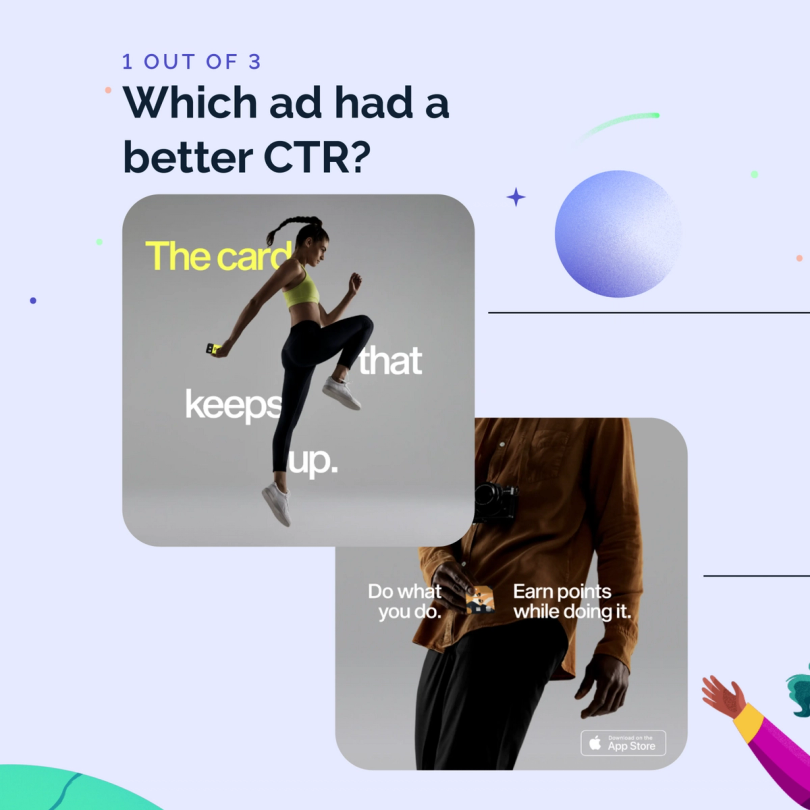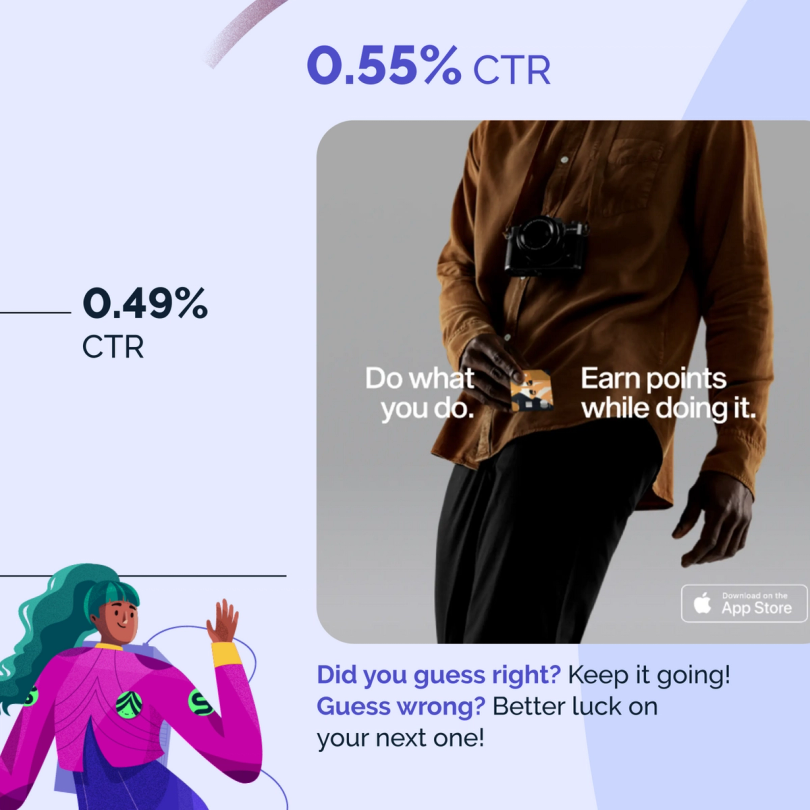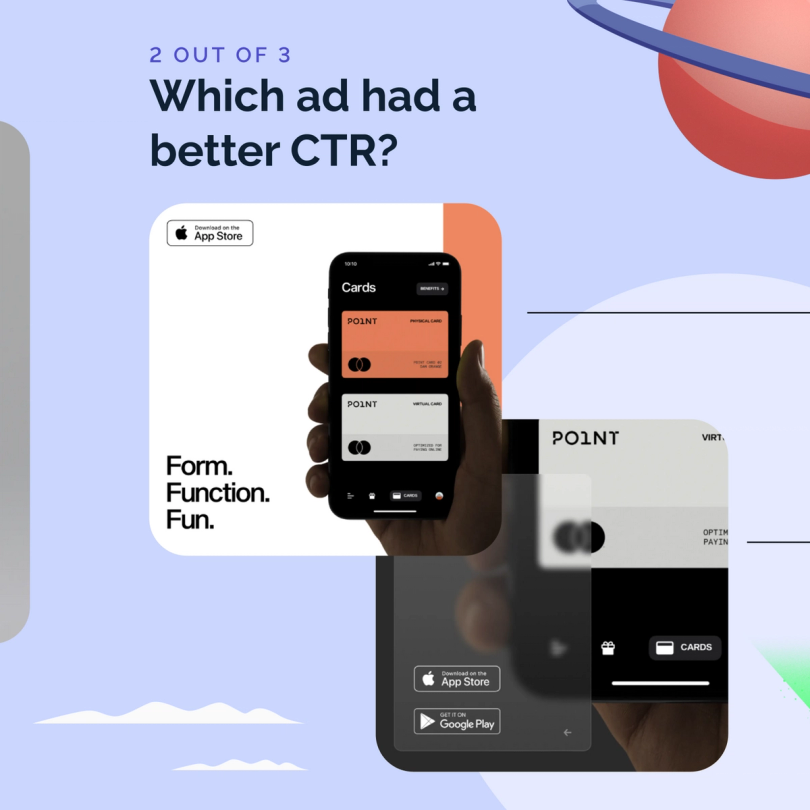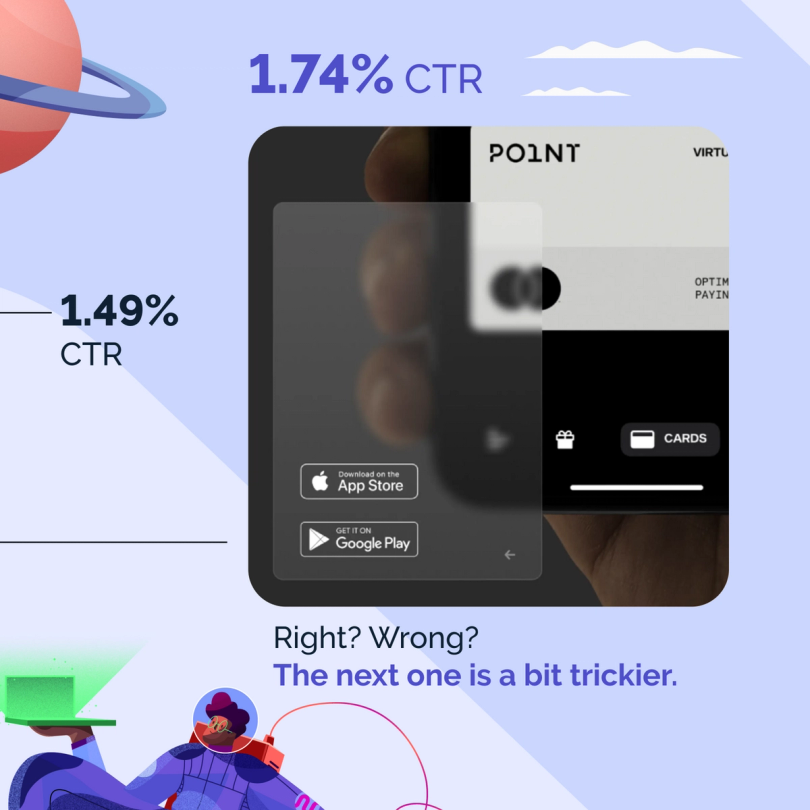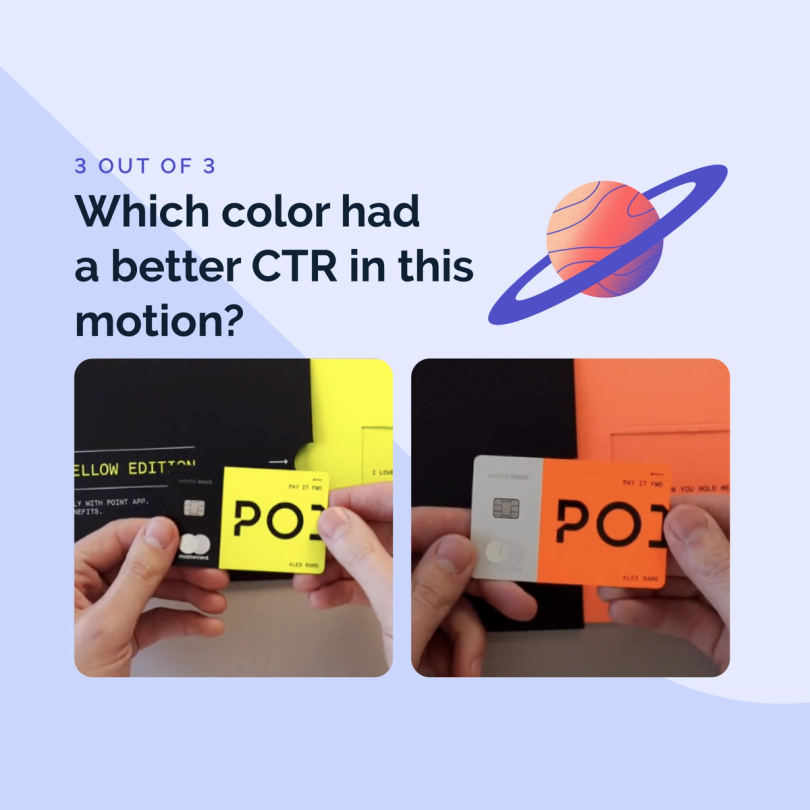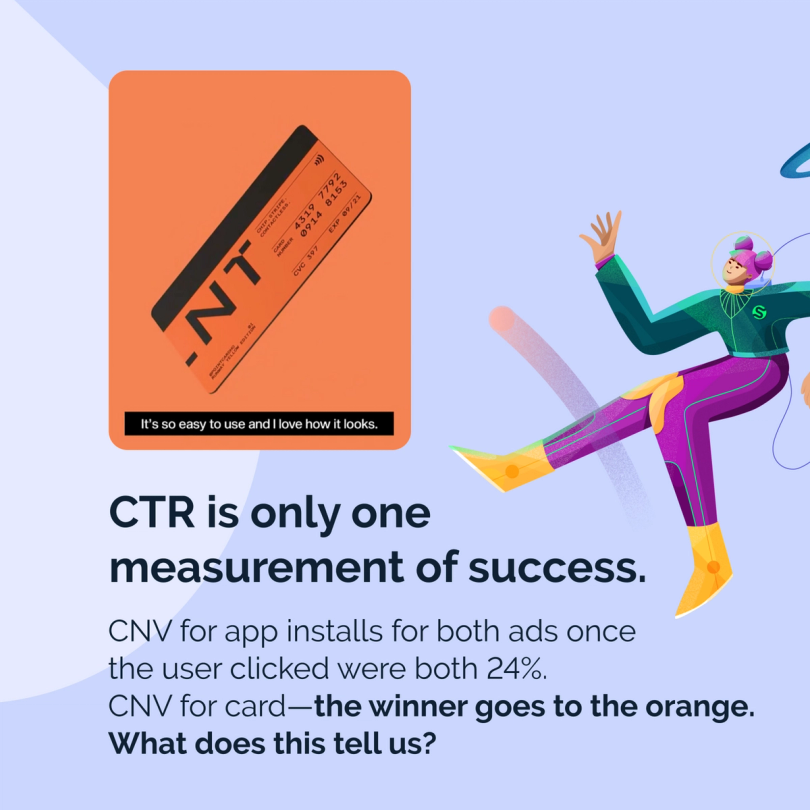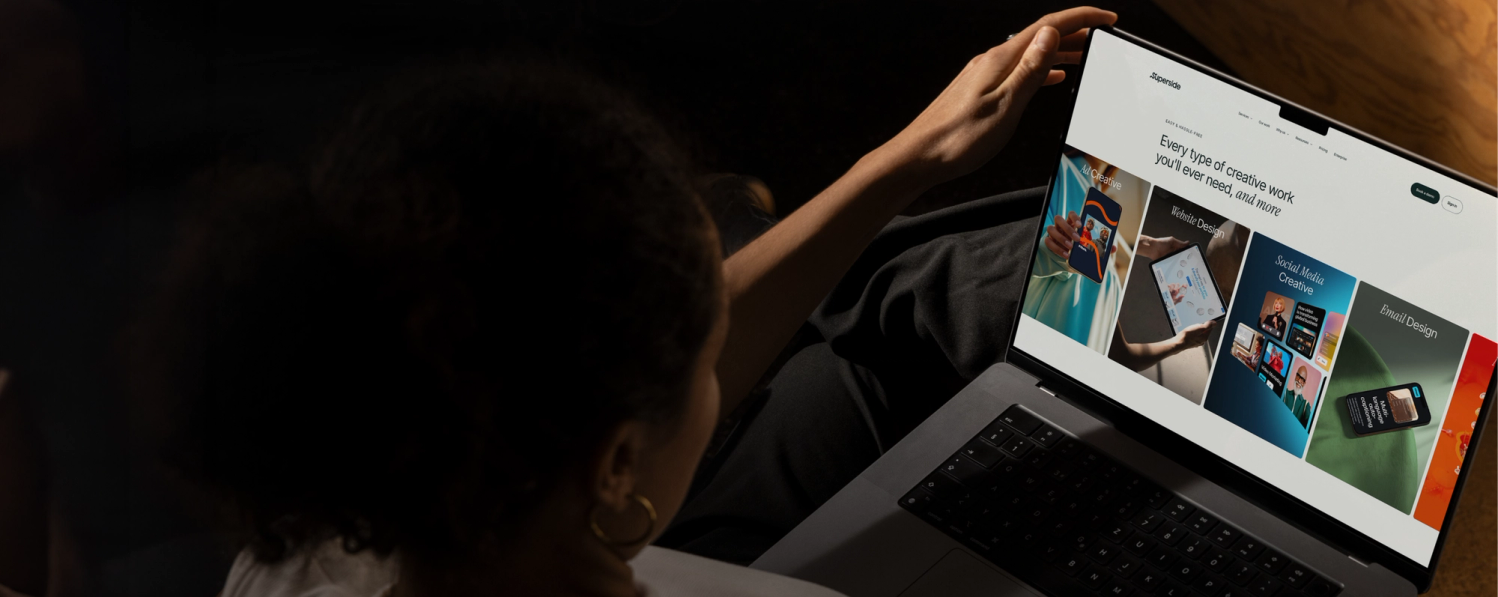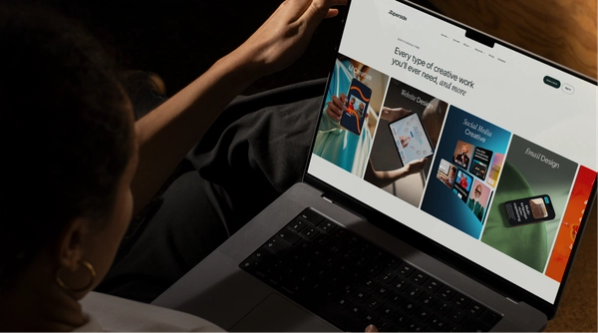Why Your Marketing Strategy Works Hard for Its Money (And It Should)

The hustle is real. In the hypercompetitive battle for attention, every second and every dollar counts. Whether the economy is booming or in a bit of a bust, every decision you make is an opportunity cost. Success comes from spending your time and energy wisely by starting with your marketing strategy.
Marketing 101—start with your strategy. Marketers and creatives know this. But in the mad rush of the digital era, it's all too easy to take action before taking stock of why you're doing it at all.
Marketing strategy is the antidote to poor impulse control. Reflecting the company's main objectives, it determines how you should filter the tactics you plan as well as the ultimate measures of success.
Be the force. Let your strategy guide you and avoid the dark side of doing with no discernable reason why. Remember, droids ride on the outside of the fighters. Jedis are the ones at the controls.
Our first strategic choice? Including a list of quick links to guide you through this post.
Know Your Marketing Strategy
"Strategy is like your blueprint. It's your big strategic outline of what you're gonna achieve and how you're gonna get there."

The dictionary definition of strategy is a plan of action designed to achieve an overall goal. In the marketing world, strategy is your what and why.
Your strategy is where you start—before you even begin producing marketing campaigns. It's rooted in your company’s highest-level goals—the big points that the leadership team hits on in every presentation.
For example, if your marketing strategy is to grow brand awareness and adoption among in-house creatives at enterprise companies, your hows—your tactics and channels—should be determined by where these creatives spend time and the messaging that means the most.
In the clip above, Devin mentions a company whose audience is commercial truck drivers. Where do truck drivers spend a lot of time? Answer: In their trucks on the road. Would this mean they have time to read blog articles? Not likely. This is why the company choose to create a highly successful podcast.
This is not a strategy...
A list of tactics with no clear reason why this is being done is not a strategy. You can plan a cadence of LinkedIn posts all you want, but if that's not where your audience gets their information or you're not sharing relevant information it's just a list of ingredients with no recipe.
It's not just content marketing either
While Devin speaks specifically to a content marketing strategy, anchoring actions in strategy is crucial for all marketing.
Do Your Homework
"When you think about your unique value proposition, think about: Why are you saying this? What is special about your message and why are you saying it instead of your competitor?"

Being a student of your market makes choosing your channels and tactics easier. Studying who your audience is and how they interact on each medium gives you those valuable breadcrumbs that point you in the right direction—letting you hone your unique value proposition (UVP).
If the creatives you’re targeting are on LinkedIn, spending some time on the channel will tell you they are, who they’re connecting with, what they’re saying—and, most importantly, where your opportunities lie. Combining this with your UVP lights the spark for further amplification.
Nail Your Brand
Your brand and your strategy go hand-in-hand. In the same way that you want to capture the audience’s attention, there’s a specific “je ne sais quoi” about how you express yourself. However brand consistency doesn’t mean you can’t experiment, it just means there has to be something about it that’s recognizably you.
Brand guidelines, identity systems and templates serve as the dictionary of your brand, providing a point of reference that makes simple executions more turnkey and ensures more dynamic explorations don’t stray too far off course.
When Doodle Labs first came to Superside, they had a few projects in mind. After initial discussions, it was clear that creating a set of brand guidelines would not only make it easier to iterate on their website refresh it would be the starting point for all future creative projects.
Keep Your Creativity Primed
Turn that ad blocker off and open the floodgates. Or, if you’re a content marketer, follow competitors and influencers online, read their blogs, watch their videos and subscribe to their newsletters. Be a sponge and soak it all in. See what stops you mid-scroll or what you pass by—and, most importantly, ask “Why?”
Nolan McCoy, Head of Video and Creative Content at Chili Piper was already a little suspicious of the cringe-worthy vibe of over-the-top excitement that was clearly manufactured. Then, he went to a TikTok account he followed and the most unenthusiastic and simplistic clip about how to ride a one-wheel had him hooked.
The more he thought about it, the more this made sense as a way to present a highly technical use case in a simple fashion. The concept for his own “Notably Excited Nolan” ad was born. (See this ad in the video below.)
Adam Morgan, Senior Director of Brand & Creative at Splunk, advises, “Fill your brain with fodder.” Whether it’s books or booking it to your social media channels of choice, the more ideas you explore, the more connections you’ll make—even when you’re not really trying to make them.
Experiment and Test
When we asked a small sampling of marketers and creatives about testing creative and concepts, the results were split:
- ⅓ said they couldn’t do their jobs without it.
- ⅓ said they test sometimes.
- ⅓ said they just didn’t have time.
In the world of digital ads where life spans are shrinking and costs and performance are locked in a continual cat-and-mouse battle, testing is what shows you what’s effective. The only way to know if something will work is to put it out there. In fact, most marketers can only predict winning ad creative 52% of the time.
A/B testing lets you experiment with different variables at different times. This is how Supserside client, PointCard unlocked a 240% increase in click-through rate (CTR) by exploring what colors, designs and testimonials drove the greatest impact.
Measure, Learn and Repeat
When you’ve done all the right things, success should be a given, right? That’s where measurement comes in.
One metric to rule them all
If there’s one metric to rule them all, it’d be your customer acquisition cost (CAC). The reason you market is to spur growth and make money. Even non-profits market to engage donors and Muppet creator Jim Henson framed the first dollar he ever made.
CAC is how much it costs to gain a paying customer. Cost per acquisition (CPA), is a similar concept, but it applies to leads that are not yet customers and only includes the costs up to the point of the hand-off to sales. In the end, it drills down to, how much did it cost you to earn each paying customer.
Representing all of the marketing and sales costs that go into earning a customer, CAC gives you a benchmark for identifying which efforts are the most or least expensive.
While testing and experimenting help you optimize campaign performance and lower CAC, correlating CAC with lifetime value (LTV) of the customers earned with each effort. Sometimes the highest LTV comes from the highest CAC. Ok, it’s even better when the lowest CAC produces the greatest LTV, but it doesn’t always work that way. (World peace would be great, too.)
Circle back to your marketing strategy
Your marketing strategy also determines how you'll measure success.
- Your goals will determine your key performance indicators (KPIs).
- Your metrics, what you measure, let you know if you're hitting your KPIs.
Overcome Obstacles
Marketers want to move the needle and so do creatives. But there’s only so much an internal creative team can do on their own. There’s only a finite amount of resources and when they’re assigned to one project, another project waits in line.
Making the most of every growth opportunity requires a constant supply of creative. A Creative-as-a-Service (CaaS) partner, like Superside, gives you the capabilities, bandwidth and support you need to say keep your creative and marketing pipelines flowing.
One-and-done will never help you win the war for attention. You need a solution that solves for concepting and production, static and motion, quick turn and complex, branding and integrated campaigns and whatever comes your way.
Superside also works efficiently, reducing production costs by as much as 50% when compared to traditional creative agencies.
Michelle enjoys learning from and empowering ambitious marketers and creatives focused on scaling design and fueling growth.🚀 With more than two decades of experience, she’s worked at both agencies and in-house teams at companies of all sizes in the United States and Canada. She began her career as an advertising copywriter, remastering these skills as a content marketer and becoming a subject matter expert on everything from frozen pies and financial statements to SaaS and now CaaS. Connect with her on LinkedIn.








